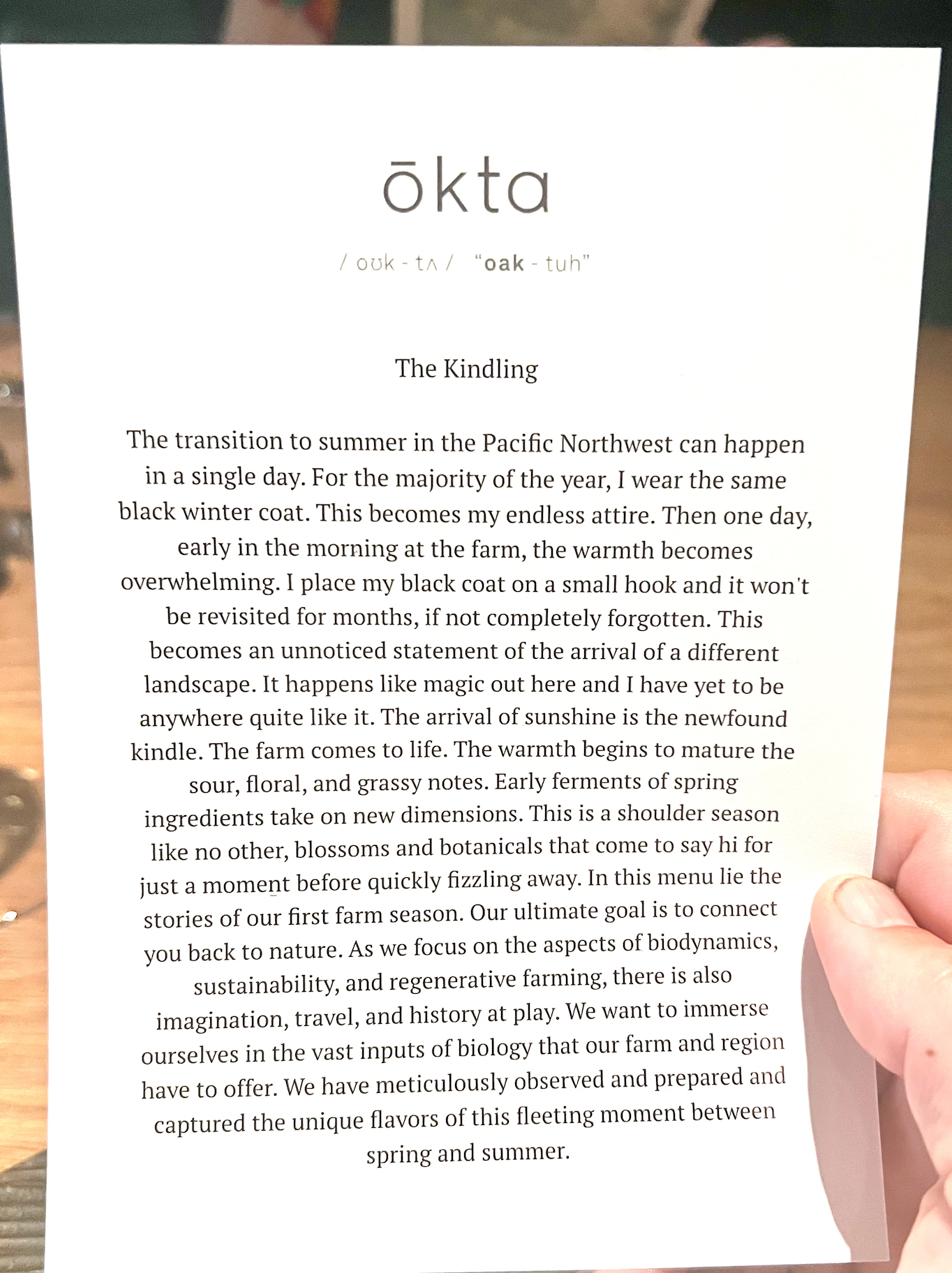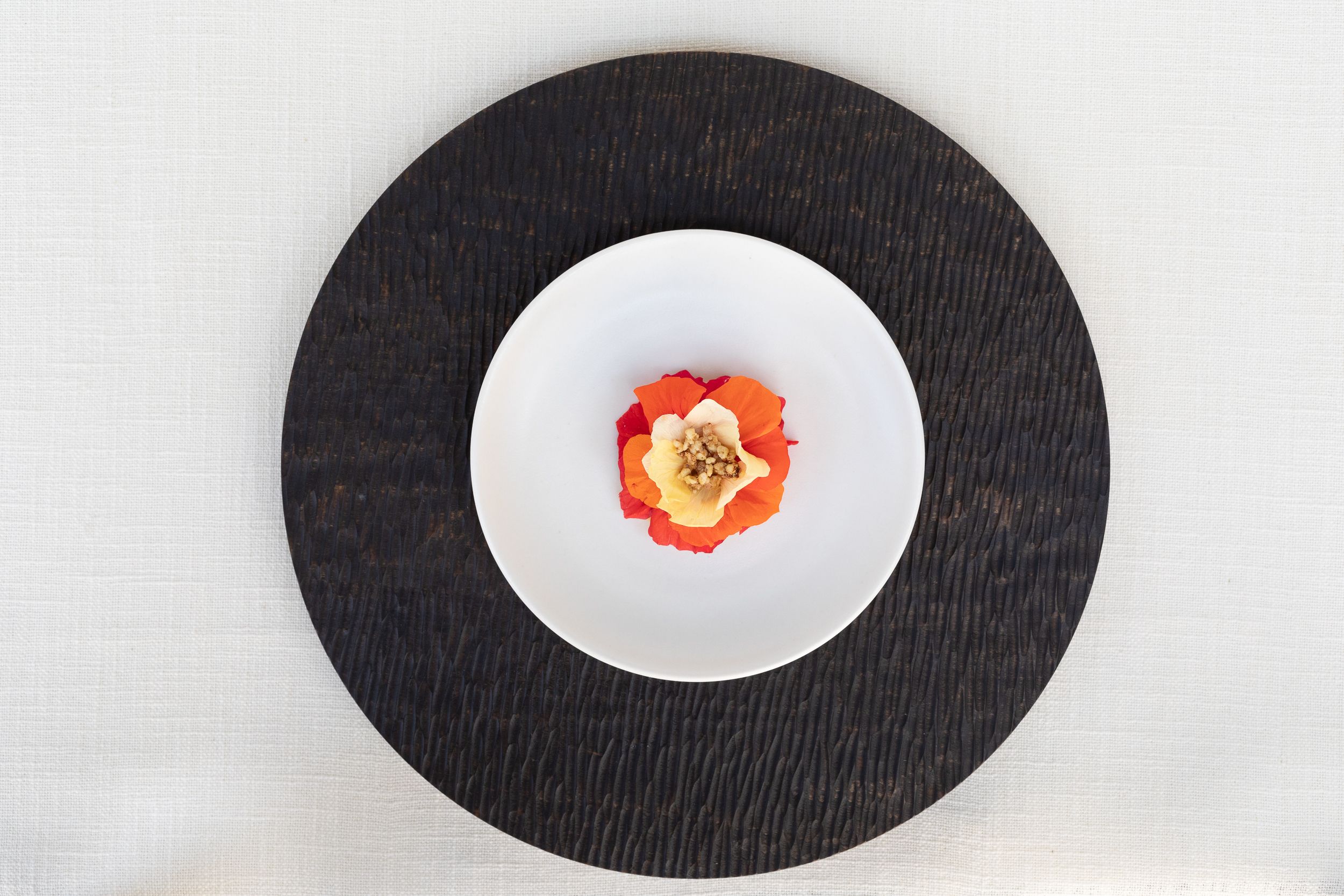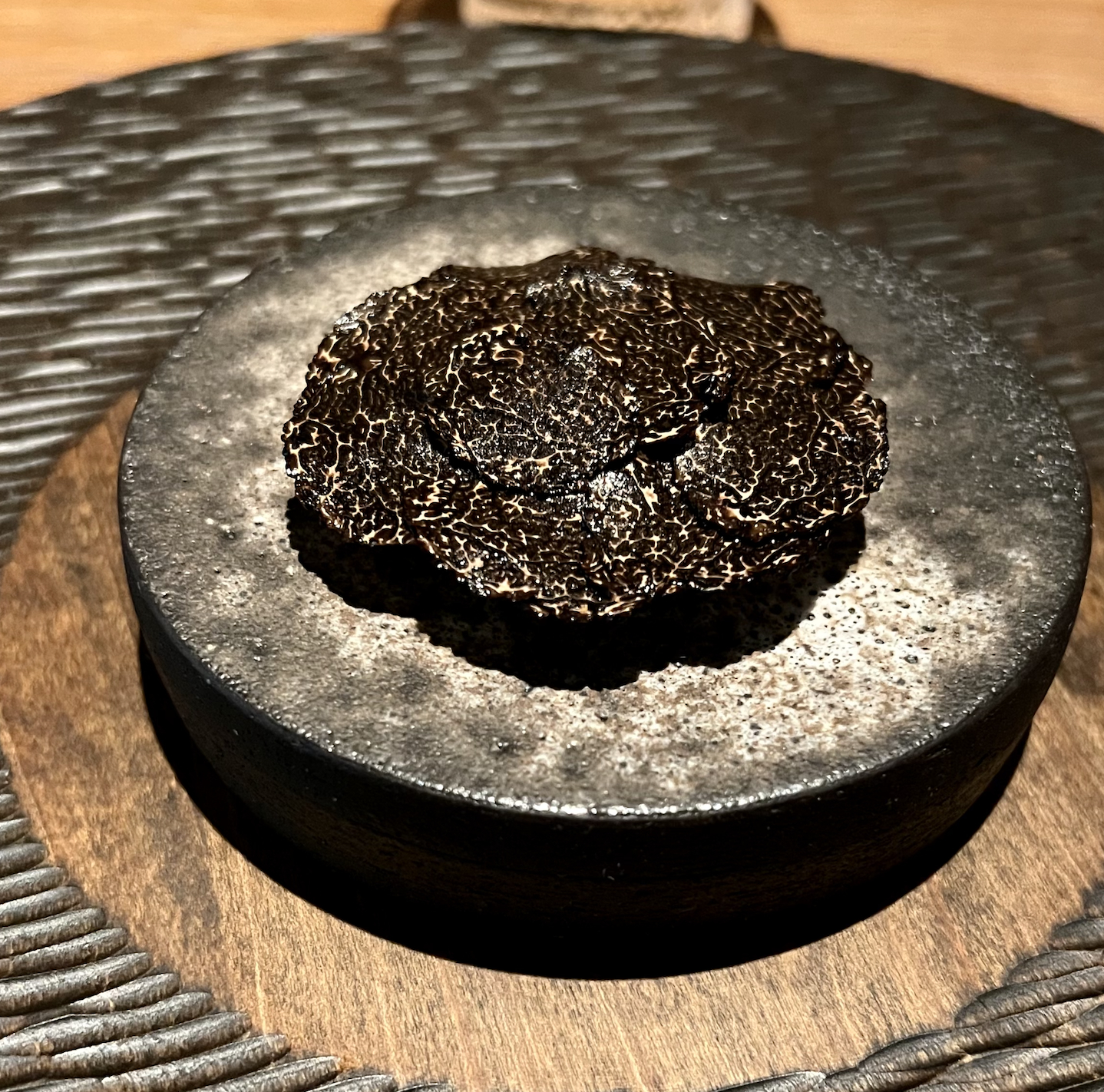When ōkta opened in McMinnville, Oregon in the summer of 2022, it instantly thrilled lovers of fine dining. Michelin-starred chef Matthew Lightner’s commitment to farming, foraging, and elevated culinary techniques have earned him widespread acclaim and his new restaurant was to be a love letter to his home state. So it’s no surprise that ōkta, based inside the Tributary Hotel, was a success out of the gate.
And yet… there were some critiques. Most notably by Karen Brooks of Portland Monthly who (with expertise and nuance) noted a lack of context and storytelling in Lightner’s early tasting menus. But unlike the era of chefs who never gave an inch (Marco Pierre White, Gordon Ramsay, etc.), by the time Uproxx visited, it seemed like the chef had absorbed the most resonant notes from the restaurant’s early days. In July of 2023, ōkta was firing at a level that demanded national attention. Not surprisingly, it commanded a whole lot of it in short order — hitting the 2023 Uproxx Fall Travel Hot List and the New York Times list of the nation’s 50 best restaurants.
For the Summer ’23 Menu, Lightner (an excellent writer himself) offered an ode to the season’s ingredients and, tougher to pin down, the ineffable feelings it creates.

Brooks’ original reviews of ōkta noted that the service was a tad wobbly. That’s very common at new fine dining restaurants, where the dishes are often delicate and there are a lot of them. Still, it was another knock. But by the time I sat down to eat there, service was undoubtedly one of ōkta’s strong suits. Not only did the team offer valuable context about each dish (concise context, thankfully) but they also followed the rules of white tablecloth British-style service with military precision. I don’t necessarily need that level of formality but I have to admit, it certainly added a nice element to the whole experience. (Also, the GM had the guts to ask a woman who was Facetiming her mom from her table to… stop. doing. that — which was much needed and appreciated.)
When it comes to the dishes themselves, the 15-course tasting menu I tried was lively and full of two to three-bite entries that tasted exactly how a good novel is supposed to end: “surprising-yet-inevitable.” The meal opened with a tomato granita-gazpacho that managed to be both bright and a potent reminder of just how much umami tomatoes can deliver. “Pollinator” starred nasturtium petals cupping honeyed buckwheat puffs and hiding foie gras over an almond cracker. Discovering those elements was not just delicious, it was fun.
Other dishes showed a similar level of playfulness. But the whimsy was paired with deep thought, technical expertise, and clear, direct flavor profiles. In short: This wasn’t a cool chef having big ideas in service of style, it was a smart chef having big ideas in service of tasting good — that small tweak can make a big difference.

Though other dishes were perhaps more inventive or technical, my palate is quick to recall “soil” — which tasted “of the earth” in the very best ways. It was a little flavor bomb of a tartlet starring black truffles, currant tomatoes, and cheese from nearby Briar Rose Creamery. Never have I eaten something that risked being too lush, too unctuous so brazenly without ever veering into “so heavy it’s dull” territory.
If my job was to explain to visiting aliens what umami was, this is the dish I would give them. If my local bakery sold these for $30 a pop, I would probably cut a lot of expenses to be able to treat myself to one each Friday.

I won’t lay out the entire menu dish-by-dish (I did over on Instagram), but I will tell you that it was as perfectly composed and balanced as I’ve ever tasted. To put an even finer point on it, what I mean is that this was the best top-to-bottom restaurant meal I’ve ever had. Every time things threatened to veer too conceptual, Lightner seemed to offer up a dish that was direct and unbeguiling. Halfway through, he dropped a stellar bread interstitial. Dessert took the berries, ice cream, and chocolate concept and separated it into three courses — cherries three ways, a sort of sweet cream cloud, and chocolate cake with chicories. All were spectacular and not too high-minded to fail as confections.
Across the meal, Lightner nailed the piece of fine dining that so much of the discourse around the movie The Menu missed – how participatory it is. And, more importantly, how fun. The conceit of The Menu was that the sort of people fine dining attracts are ~generally speaking~ miserable dorks. As someone who loves fine dining, that’s not my experience. People who consistently spend their money in this way genuinely enjoy it as a recreation. It’s not like we’re sitting down to 20-course tasting meals with the same motivations we have when ordering a burger. We know it’s a game of sorts, just like someone wanting to cheer on a bunch of dudes they don’t know throwing a ball around.
At least during my preferred way to blow $600 the star (the chef) wants me there and appreciates me. And I get to leave full without having to consume a chili dog.
Lightner got the “fine dining is fun” concept perfectly. He enthralled me via the food, which was created for the enjoyment of diners not for the sake of his ego (as film and TV featuring fine dining would have you believe). It was spectacular to witness. Plus it all tasted flat-out amazing.
WHY NOW:
Two days after Uproxx’s July visit, Portland Monthy updated their review with a bombastic (but bang-on) headline – “ōkta Is Now Oregon Wine Country’s Greatest Restaurant, Ever.” They’re not wrong. To truly absorb and sit with ōkta’s concepts, I recommend an overnight at the adjoining Tributary Hotel – where the bathtubs are deep and the breakfast is more inventive (and sprawling) than anything you’ll find in the rest of the state.







